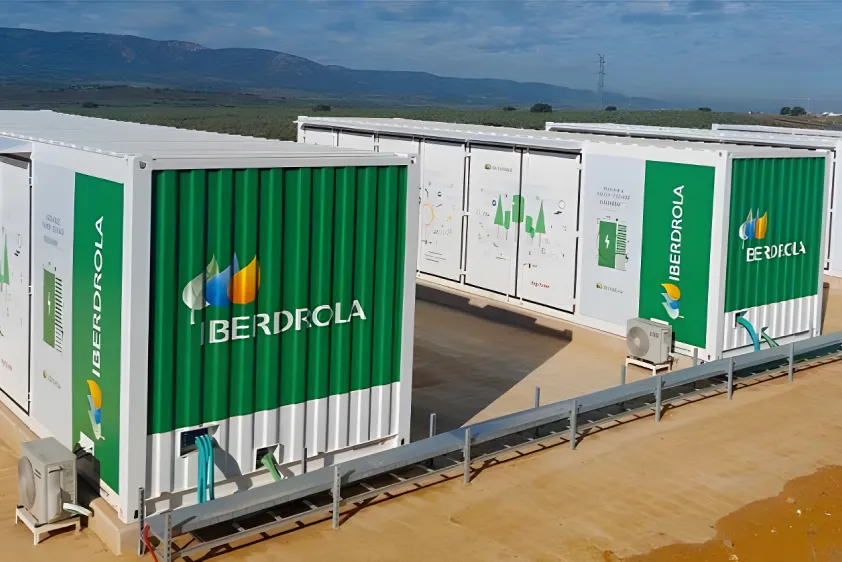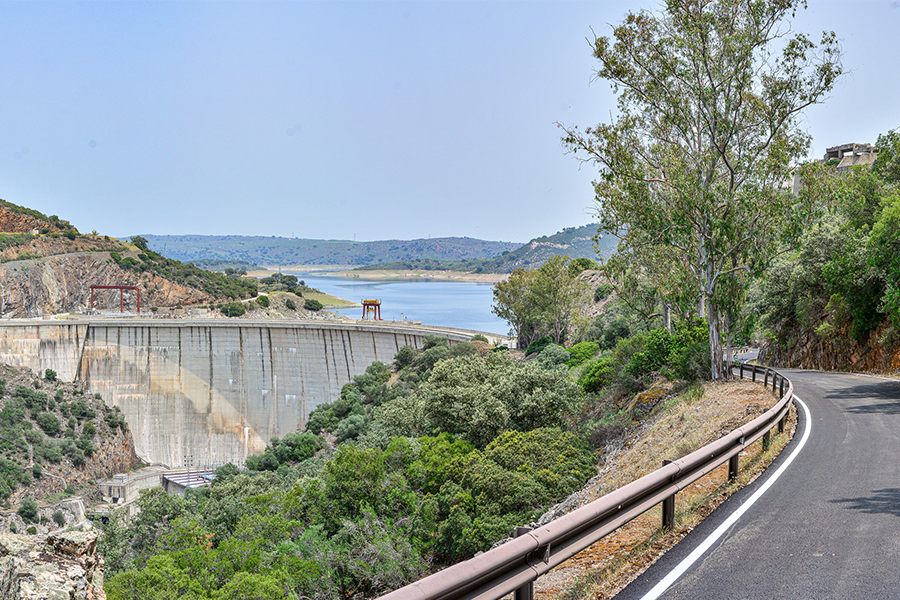ENERGY STORAGE IN SPAIN
Energy storage in Spain: a key element for the energy transition
Energy storage systems in Spain are a key element in the fight against climate change, as they help us to address the challenge of the energy transition. These systems make renewable energy production more flexible; and therefore help us to guarantee its integration into the Spanish electricity system.

Battery of the green hydrogen plant in Puertollano (Ciudad Real).
Electricity can be easily generated, transported and transformed; however, until now it has been difficult to find the best way to store it. This means that it has had to be generated at all times according to demand, which has been a challenge for the integration of renewables into the electricity system. Renewable energies, such as solar and wind energy, depend on environmental factors that are intermittent and uncontrollable, and require the support of storage systems to be able to meet energy demands at off-peak periods and make the most of every green megawatt (MW) generated at peak periods.
Energy storage in Spain
A study published by the research centres TNO and Fraunhofer-Gesellschaft and the consulting firm Trinomics concluded that Spain, together with Germany, tops the list of countries planning the most stored energy in the European Union. With more than 20,000 megawatts, Spain is the country with the largest number of energy storage systems in Europe measured by power, and has the second largest number of projects: 128 in total; second only to Germany's 169.
By taking steps towards the implementation of these technologies, which are essential for the energy transition, Spain is complying with the indications of the EU, which has urged Member States to promote the development of energy storage. In a document published in 2023, the European Commission has outlined ten recommendations for countries to accelerate the development of energy storage technologies.
The deployment of these technologies in Spain not only contributes to the stability of the electricity supply, but also strengthens the flexibility and resilience of the Spanish energy system. The ability to store energy efficiently makes it possible to face challenges such as variability in renewable production and demand peaks, guaranteeing a constant and sustainable supply. By relying on these storage systems, Spain can become less dependent on both fossil fuels and environmental factors – ensuring the country's electricity sector more autonomy, security and sustainability.
Types of energy storage
Storing electrical energy can be a challenge, but today there are different technologies that allow us to do so. Below, we explain which storage systems can help us achieve emission-free energy production, distribution and consumption.
Hydroelectric pumping
Today, pumped hydroelectric energy storage is the most efficient system for large-scale energy storage, not only because of its cost-effectiveness, but also because it provides stability, security and sustainability to the electricity system. It is capable of generating significant amounts of energy with a very fast response time and without creating any emissions into the atmosphere.
Baterías
A battery is a device that stores energy in chemical compounds capable of generating electrical charge. The main advantages of batteries are their rapid response (milliseconds), their ease of installation and scalability and, finally, the multiple benefits they can bring to renewable assets to which they connect.
Compressed air
Compressed air energy storage is produced in installations with a reversible motor that, during periods of excess energy, stores ambient air at high pressures in underground cubicles. It is a mechanical storage system comparable in capacity to hydroelectric pumping.
Thermal storage
Thermal storage is the result of the accumulation of energy in materials that allow it to be retained and released in a controlled manner. Methods range from cooling by ice accumulation to exposure to extremely high temperatures. Like hydroelectric pumping and compressed air systems, this system is designed to store energy on a large scale.





